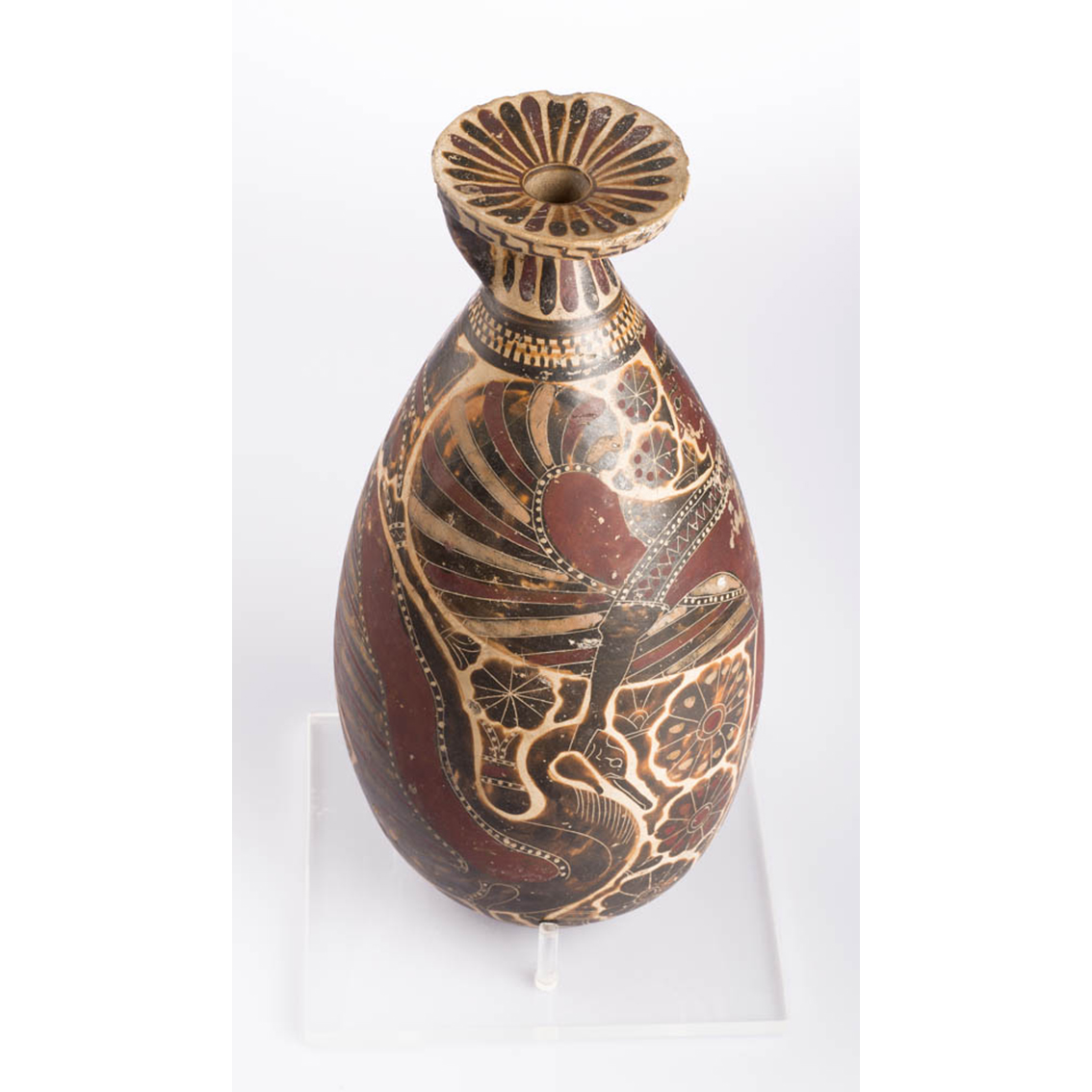Lorem ipsum dolor sit amet, consectetur adipiscing elit. Morbi eu nulla vehicula, sagittis tortor id, fermentum nunc. Donec gravida mi a condimentum rutrum. Praesent aliquet pellentesque nisi.


Alabastron depicting “Mistress of the Animals”
DESCRIPTION: Corinthian alabastron decorated with black-figure winged “Mistress of the Animals”
CULTURE: Greek Corinthian
PERIOD: Archaic Period, Proto-Corinthian
MATERIAL: ceramic
DIMENSIONS: 28.2 x 15 cm
COLLECTION: Freud, Sigmund
The design on this large alabastron, a perfume or oil flask, appears at first to be a rich abstract tapestry. However there is a central subject to the overall pattern. A winged ‘mistress of animals’ stands central to the design, with her head turned to the left.
She wears a finely patterned tunic and has an unusually large head, broad shoulders and long arms. On her head she wears a polos, a kind of tall headdress often worn by goddesses depicted in the Archaic Period. In each hand she she holds the neck of a swan, whose wings are extended around the vessel to almost touch.
Vases painted in Corinth, a city and former municipality in Corinthia, Greece, in this period were characterised by scenes of animals. Sometimes these were real creatures and sometimes they were fantastical.
Many of the creatures and semi-human figures which featured in the designs originated in the near East. The ‘mistress of animals’ on this vessel is thought to derive from various western Asian mother goddesses, whom the Greeks associated with Artemis, the goddess of the hunt.
The size, shape and carefully painted style of this alabastron suggests it belongs to the very early Corinthian period. Freud collected nearly a dozen Archaic period Corinthian vessels. This is the largest and most impressive.